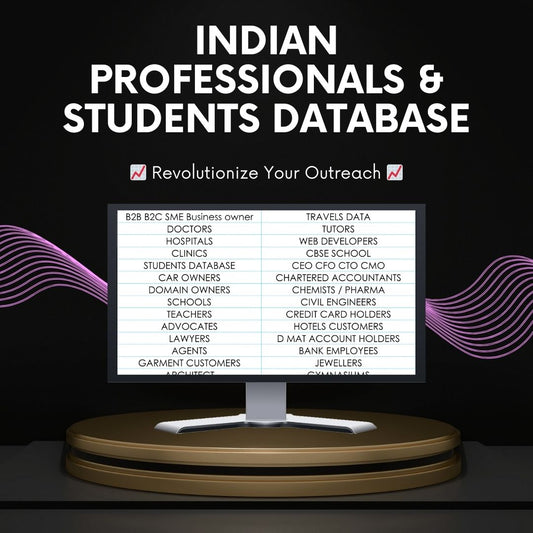वर्डप्रेस में MPG के साथ प्रोग्रामेटिक SEO साइट बनाना
शेयर करना
प्रोग्रामेटिक SEO साइट बनाना किसी भी व्यक्ति के लिए गेम चेंजर हो सकता है जो अपनी ऑनलाइन उपस्थिति को बढ़ाना चाहता है। इस ब्लॉग में, हम वर्डप्रेस में MPG (मल्टी पेज जेनरेटर) प्लगइन का उपयोग करके प्रोग्रामेटिक SEO साइट बनाने का तरीका जानेंगे। यह तरीका WP ऑल इंपोर्ट जैसे पारंपरिक तरीकों से कहीं ज़्यादा कारगर हो सकता है, खासकर जब बड़े डेटासेट से निपटना हो।
WP ऑल इम्पोर्ट की जगह MPG क्यों चुनें?
WP All Import लंबे समय से प्रोग्रामेटिक SEO साइट्स बनाने के लिए सबसे कारगर उपाय रहा है। हालाँकि, यह WordPress डेटाबेस में सभी पोस्ट को भौतिक रूप से बनाता है, जिससे आपके पास हज़ारों पेज होने पर प्रदर्शन संबंधी समस्याएँ हो सकती हैं। डेटा को फिर से आयात करना भी धीमा और बोझिल हो सकता है।
MPG प्लगइन इन समस्याओं का समाधान करता है, डेटाबेस को बढ़ाए बिना गतिशील पेज निर्माण की अनुमति देता है। इसका मतलब है कि आपकी सामग्री का प्रदर्शन तेज़ होगा और अपडेट करना आसान होगा।
एमपीजी के साथ शुरुआत करना
आरंभ करने के लिए, आपको वर्डप्रेस रिपॉजिटरी से MPG प्लगइन इंस्टॉल करना होगा। इंस्टॉल होने के बाद, आप एक नया प्रोजेक्ट बना सकते हैं। पहला कदम अपनी परियोजना को परिभाषित करना और इकाई प्रकार का चयन करना है, जो आम तौर पर 'पोस्ट' होगा।
टेम्पलेट बनाना
वर्डप्रेस में ब्लॉक एडिटर का उपयोग करके, आप अपने पेजों के लिए एक टेम्पलेट बना सकते हैं। यह आपको वर्डप्रेस में उपलब्ध सभी ब्लॉकों का उपयोग करने की अनुमति देता है, जिससे आपके लेआउट को डिज़ाइन करना और अपनी सामग्री को स्टाइल करना आसान हो जाता है।
उदाहरण के लिए, आप सीधे टेम्पलेट के भीतर टेबल, FAQ और अन्य संरचित सामग्री प्रकार बना सकते हैं। यह लचीलापन WP All Import पर एक महत्वपूर्ण लाभ है, जो अधिक कठोर संरचना का उपयोग करता है।
अपना डेटा स्रोत सेट अप करना
MPG आपको अपने डेटा स्रोत के रूप में CSV फ़ाइल या Google शीट का उपयोग करने की अनुमति देता है। इस गाइड में, हम एक Google शीट का उपयोग करेंगे जिसमें विभिन्न खाद्य पदार्थ और उनकी पोषण संबंधी जानकारी शामिल है। सुनिश्चित करें कि आपकी शीट में प्रत्येक चर के लिए स्पष्ट शीर्षक हैं जिन्हें आप अपनी पोस्ट में उपयोग करना चाहते हैं।
एक बार जब आपकी Google शीट तैयार हो जाए, तो आप MPG सेटिंग में इसका सीधा लिंक दे सकते हैं। MPG डेटा लाएगा और आपको अपने पेज बनाने से पहले उसका पूर्वावलोकन करने की अनुमति देगा।
यूआरएल उत्पन्न करना
अपना डेटा आयात करने के बाद, MPG आपके द्वारा परिभाषित स्लग के आधार पर स्वचालित रूप से URL जेनरेट करेगा। आप इन स्लग को SEO-फ्रेंडली बनाने के लिए कस्टमाइज़ कर सकते हैं। एक बार जब आप अपने परिवर्तन सहेज लेते हैं, तो MPG अपने द्वारा जेनरेट किए गए सभी URL की एक सूची बनाएगा, जिसे आप आवश्यकतानुसार देख और संपादित कर सकते हैं।
गतिशील रूप से सामग्री बनाना
MPG की सबसे बेहतरीन विशेषताओं में से एक है आपके पोस्ट में डेटा को गतिशील रूप से डालने की इसकी क्षमता। उदाहरण के लिए, यदि आपके पास 'प्रोटीन के ग्राम' के लिए एक कॉलम है, तो MPG स्वचालित रूप से उस जानकारी को आपके पोस्ट के संबंधित अनुभाग में खींच लेगा।
आप अपनी सामग्री में सूचियाँ या शर्तें बनाने के लिए शॉर्टकोड का भी उपयोग कर सकते हैं। उदाहरण के लिए, यदि आप किसी विशिष्ट श्रेणी के खाद्य पदार्थों की सूची प्रदर्शित करना चाहते हैं, तो आप उस श्रेणी के आधार पर फ़िल्टर करने वाला शॉर्टकोड सेट कर सकते हैं। यह आपकी आंतरिक लिंकिंग को बढ़ाता है और उपयोगकर्ता नेविगेशन को बेहतर बनाता है।
साइटमैप बनाना
MPG आपको अपनी साइट के लिए साइटमैप बनाने की भी अनुमति देता है। यह SEO के लिए महत्वपूर्ण है क्योंकि यह सर्च इंजन को आपके पेजों को अधिक प्रभावी ढंग से क्रॉल करने में मदद करता है। आप प्रति साइटमैप अधिकतम 10,000 URL निर्दिष्ट कर सकते हैं, जो विशेष रूप से बड़ी साइटों के लिए उपयोगी है।
एक बार आपका साइटमैप तैयार हो जाने के बाद, आप इसे आसानी से सेव कर सकते हैं और अपनी साइट की दृश्यता बढ़ाने के लिए इसे गूगल जैसे सर्च इंजन पर सबमिट कर सकते हैं।
छवियों के साथ अपने पृष्ठों को बेहतर बनाना
अपने पेज को ज़्यादा आकर्षक बनाने के लिए, आप MPG का उपयोग करके इमेज जोड़ सकते हैं। आप अपनी Google शीट में एक इमेज कॉलम निर्दिष्ट कर सकते हैं, और MPG स्वचालित रूप से इन इमेज को आपकी पोस्ट में खींच लेगा। यह सुविधा आपको उपयोगकर्ता की रुचि को आकर्षित करने वाली विज़ुअली आकर्षक सामग्री बनाने की अनुमति देती है।
डिफ़ॉल्ट छवियों का उपयोग करना
जिन आइटम में कोई विशिष्ट छवि नहीं है, उनके लिए आप प्रदर्शित करने के लिए एक डिफ़ॉल्ट छवि सेट कर सकते हैं। यह सुनिश्चित करता है कि आपके सभी पोस्ट में एक दृश्य तत्व हो, जो उपयोगकर्ता की सहभागिता और आपकी साइट पर बिताए गए समय को बेहतर बनाने में मदद कर सकता है।
अपनी प्रोग्रामेटिक SEO साइट को अंतिम रूप देना
एक बार जब आप अपना टेम्प्लेट, डेटा स्रोत और सामग्री सेट कर लेते हैं, तो आप अपने पेज प्रकाशित कर सकते हैं। MPG आपको रीयल-टाइम अपडेट करने की अनुमति देता है, इसलिए यदि आप अपनी Google शीट में कोई मान बदलते हैं, तो वे परिवर्तन डेटा को फिर से आयात किए बिना स्वचालित रूप से आपकी साइट पर दिखाई देंगे।
यह लचीलापन MPG को उन लोगों के लिए एक उत्कृष्ट विकल्प बनाता है जो कुशलतापूर्वक बड़े पैमाने पर प्रोग्रामेटिक SEO साइट का निर्माण करना चाहते हैं।
निष्कर्ष
MPG प्लगइन का उपयोग करके वर्डप्रेस में प्रोग्रामेटिक SEO साइट बनाना आपके वर्कफ़्लो को काफी हद तक सुव्यवस्थित कर सकता है और साइट के प्रदर्शन को बेहतर बना सकता है। ब्लॉक एडिटर की लचीलेपन और MPG की गतिशील क्षमताओं का लाभ उठाकर, आप एक मजबूत और स्केलेबल साइट बना सकते हैं जो आपकी सामग्री की ज़रूरतों के अनुकूल हो सकती है।
यदि आपके पास कोई प्रश्न है या बताए गए किसी भी चरण पर और स्पष्टीकरण की आवश्यकता है, तो बेझिझक हमसे संपर्क करें। निर्माण का आनंद लें!



